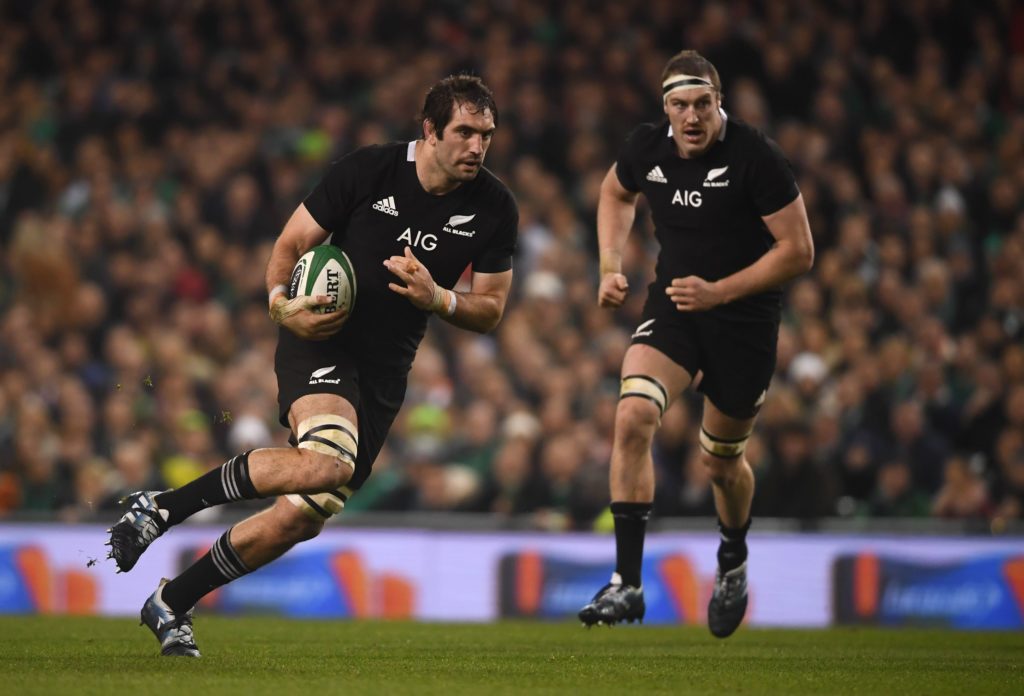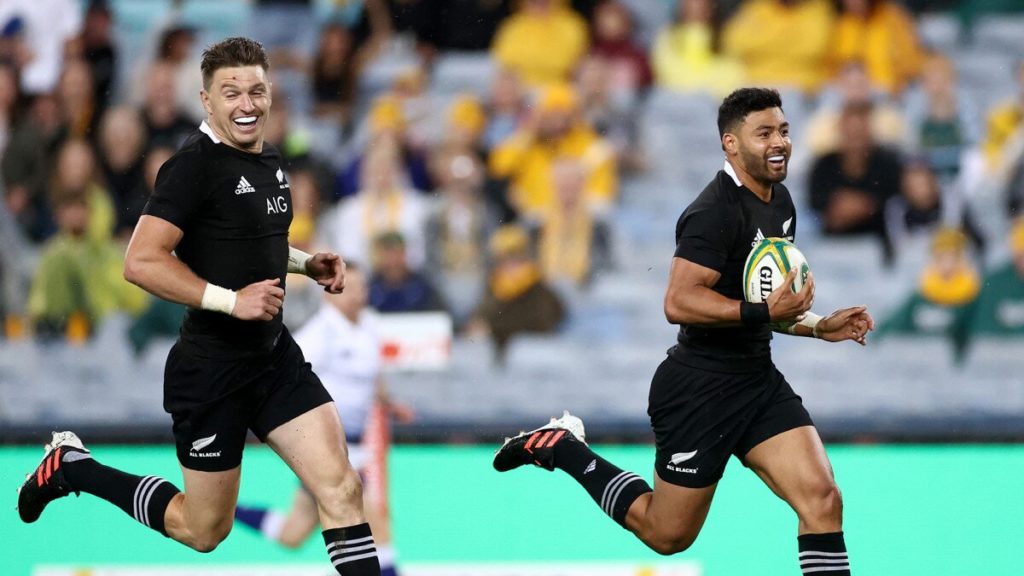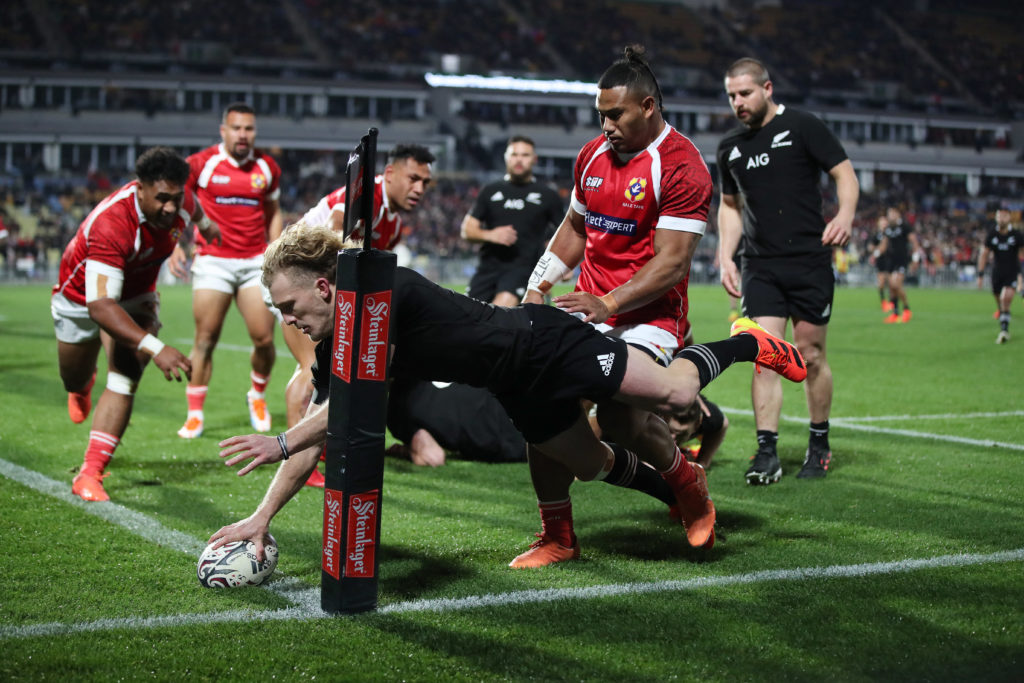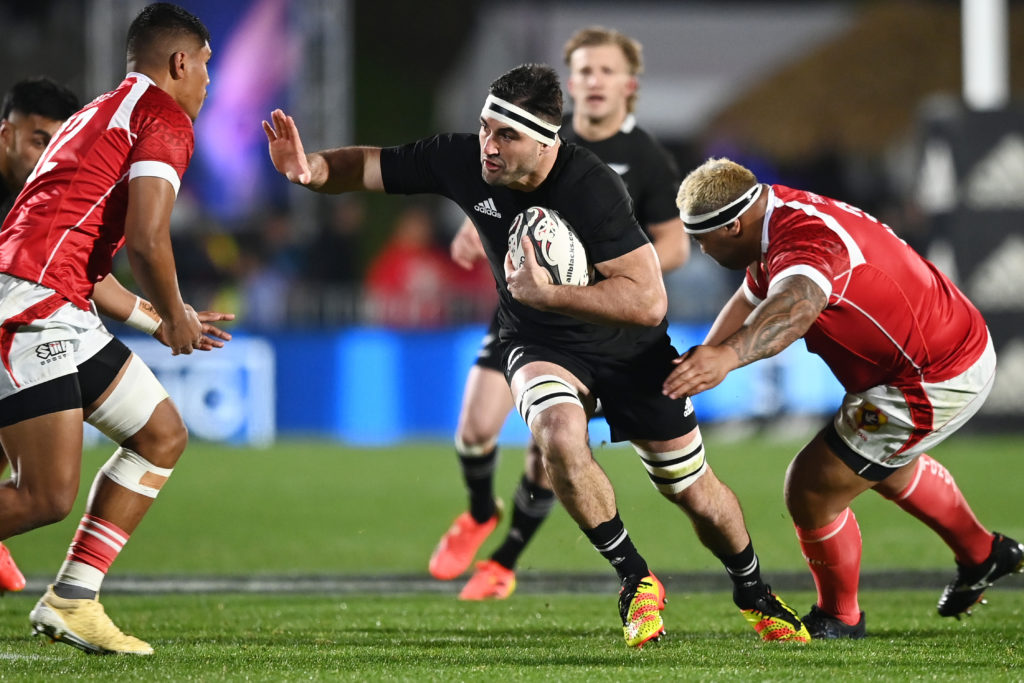A couple of years ago, such was the incredible depth of talent within New Zealand, that former Wallaby Mark Ella said Mickey Mouse could successfully coach the All Blacks.
As All Blacks coach of the time, Steve Hansen, noted that Mickey couldn’t coach the All Blacks because he was already in charge of the Wallabies.
If Hansen had wanted to engage in the topic – rather than dismiss it with a memorable one-line quip – he would have disagreed entirely with Ella’s assertion.
He would have agreed that the All Blacks had an abundance of quality players, but not that possessing talent is enough on its own to make coaching the team the sort of doddle Ella was suggesting.
That talent pool has deepened in the last few years and the All Blacks now have a squad of 36 players and no clear sense yet of what their best 23 looks like.

If we stick with the Ella line of thinking then head coach Ian Foster could assemble the All Blacks anyway he likes and they will always be good enough to win tests.
It’s a fallacy, though, to imagine that’s actually the case. Having good players is a table stake these days. Every nation has good players – and lots of them. France, South Africa, England, Ireland and Wales all have multiple options in most positions. All of them can call on experienced, proven performers even when they are in the midst of an injury crisis.
Success in test football is determined by the ability to pick the right players in the right positions and then build effective combinations around a specific style or variation of styles.
The challenge facing all teams is building certainty about what their best team looks like and then giving it the bulk of the available game time.
It sounds simple, obvious even, but sometimes those facts get lost when a country has such an abundance of talent and the All Blacks, more so than at any time in the last decade, have a lack of certainty about their best XV.
The back-row could be set up many different ways. The midfield does not have an established combination to lean on and the back three has so many different potential permutations depending on how the selectors want to play.
There is barely a position or a combination that has a definitive, non-negotiable occupant. The list of certainties is restricted to stand-in captain Sam Whitelock, halfback Aaron Smith and the job-sharing pair at hooker of Codie Taylor of Dane Coles.
There is no clear pecking order at prop and nor, at the moment, is there certainty about who should partner Whitelock in the second row.
The back-row could be set up many different ways. The midfield does not have an established combination to lean on and the back three has so many different potential permutations depending on how the selectors want to play.
Then, to top it all, there is the question of whether to start with Beauden Barrett in the No 10 jersey or Richie Mo’unga?
“I would say in my time with the All Blacks there’s probably more positions that we’re debating than for a long, long time,” acknowledged All Blacks coach Ian Foster after his side defeated Tonga 102-0 in their first test of the year.
“This series [Pasifika series] is important for us from that perspective. We’ve got some big calls to make, but we’ll worry about those calls after we see these three games and the great thing is we’ve actually got the chance for people to put their best foot forward during the training week and with how they prepare. She’s pretty competitive.”

What that means in actuality is that the All Blacks are likely to pick a vastly different team this week to play Fiji in Dunedin than the one that started against Tonga. The intention is to give the entire squad some kind of opportunity to press their claim ahead of the Bledisloe series kicking off on August 7 at Eden Park.
“There’s 36 guys that want to start every week, but Ian is really good at painting a bigger picture,” defence coach Scott McLeod says.
“Everyone will get some sort of opportunity but at training that’s their chance to show they want to play as well so it’s interesting times.”
Almost every position is potentially contestable which is rare indeed for the All Blacks. They are always inundated with options, but they typically tend to know the bulk of their likely best XV at any given time.
To not know it carries an element of danger. The best sides are built on strong combinations rather than strong individuals. The best sides build on their collective understanding of what they are trying to do and in time, they do tend to find an almost instinctive ability to read each other.
Yeah, I am quite pleased with Damian. I thought he looked calm. I think in the last few months his decision-making at the back has been really accurate and he’s gone from being a guy who just did the dazzling runs and getting some wrong, to now he is distributing, he is kicking well he’s giving us that two-sided attack that we love to have.
The All Blacks want to find their best combination this year and build a sense of what their ideal XV looks like. It is hard to know, in relation to that specific goal, how much they took out of their test against Tonga.
Probably there were three key highlights for them. The first was the performance of Damian McKenzie who flitted between fullback and first receiver and showed how difficult he can be to pin down when he bobs around the edge of the ruck, asking big men to get low to hit him legally.
His was a class performance, where he distributed well, mixed his option-taking and seemed to get the right balance between staying in the backfield and knowing when to come to the frontline as a first receiver.
As Foster said: “Yeah, I am quite pleased with Damian. I thought he looked calm. I think in the last few months his decision-making at the back has been really accurate and he’s gone from being a guy who just did the dazzling runs and getting some wrong, to now he is distributing, he is kicking well he’s giving us that two-sided attack that we love to have. I thought he should be pretty happy with what he did.”

He’s been used as a second play-maker before by the All Blacks – operating in that role throughout the 2018 end of year tour. But whatever he was offering back then, he’s offering much more now and in doing so, has differentiated himself from Jordie Barrett.
McKenzie and Barrett have been the two form fullbacks this year, but they contribute in vastly different ways. The former increasingly looks like a No 10 wearing No 15 while the latter is offering a more traditional skill-set in that his game is built on his booming boot, solid defence and ability to enter the attacking line.
The second major piece of intel Foster will have gathered at Mt Smart Stadium is that in young Quinn Tupaea, he has a No 12 who can play the role of midfield hitman without being overwhelmed by the occasion and without feeling the need to overplay his hand.
Tupaea made an impressive debut against Tonga where he focused on the basics and nothing more. He also had to adjust quickly after making an error of judgement in the opening 10 minutes.
Mostly, it seems, everyone is picking that Havili is ahead of [Quinn Tupaea] in the pecking order, but that might not be the case at all and certainly Tupaea’s performance in Auckland will have done him no harm.
“He got smacked early,” said Foster of Tupaea. “I think he realised after 10 minutes that it might be better to go for a weak shoulder rather than T-bone, but he stayed in the game.”
He lacks the experience of David Havili and has a much narrower skill-set, but Tupaea may yet win more game time this series to continue to press his claim to start in the No 12 jersey against the Wallabies in early August.
Mostly, it seems, everyone is picking that Havili is ahead of him in the pecking order, but that might not be the case at all and certainly Tupaea’s performance in Auckland will have done him no harm.
The third conclusion Foster will have made from the Tongan encounter is that Luke Jacobson brings an all-round game to the No 8 role which perhaps makes him a more tempting prospect than Hoskins Sotutu.
Even allowing for the fact Tonga were fielding 13 new caps some of whom had been plucked out of club rugby in Dunedin, Jacobson showed a healthy appetite to run straight and hard and his work rate was impressive, too.

This coming game against Fiji provides an opportunity to gather yet more facts, one of which is likely to be the game readiness of Brodie Retallick. The big lock hasn’t played for five weeks and had to endure two weeks in quarantine when he returned from Japan.
He’s also trimmed down to 117kg as a result of playing in Japan and so he represents a little bit of an unknown. Foster said ahead of the match against Tonga: “He’s nearly there. I’ve seen Finlay Christie get smacked out of a ruck and do a somersault and I chuckled and said ‘welcome back Brodie’ and that was a non-contact session. That means that Brodie is back, doesn’t it? He’s hungry, he’s energetic, he’s certainly refreshed, his body is feeling good.
“There is quite a significant adjustment to the intensity side. You’ve got to remember he’s had two weeks in quarantine and then three weeks out of the rugby environment doing his own thing so some of the micro skill sets – the catch pass, the instinctiveness – is coming back so a week in the grandstand won’t hurt him.”
Retallick, then, is likely to be seen in Dunedin, possibly off the bench, while the selectors will also be keen to throw new cap Ethan de Groot into action, return Sevu Reece to one wing, start with Havili at 12 and give Jordie Barrett a run at fullback.
It’s all about slowly building a picture to gain that certainty about what the All Blacks best team actually looks like.


Comments
Join free and tell us what you really think!
Sign up for free